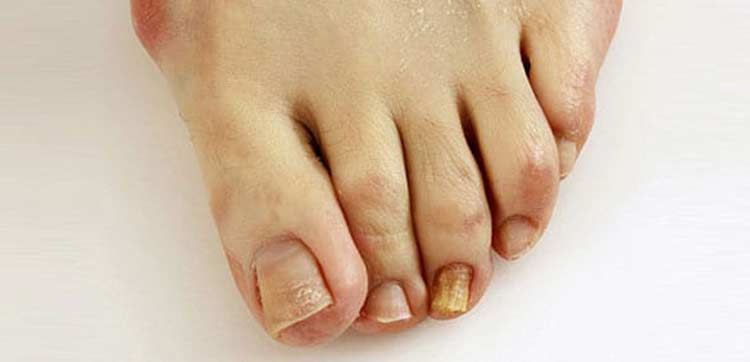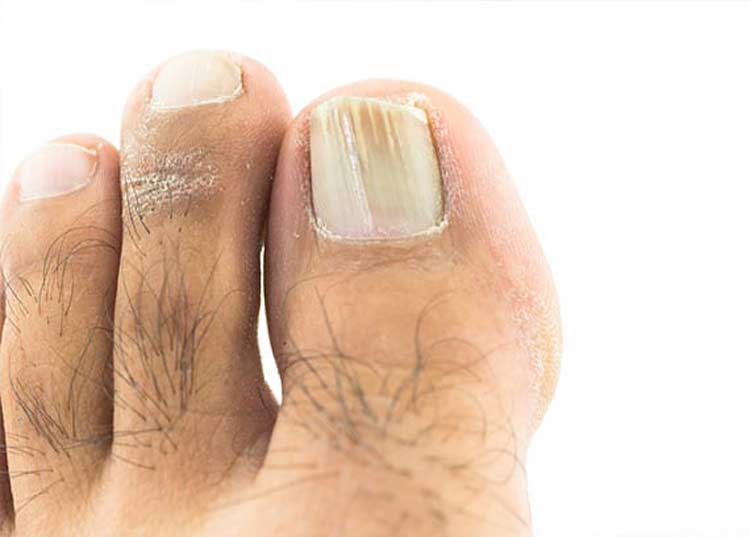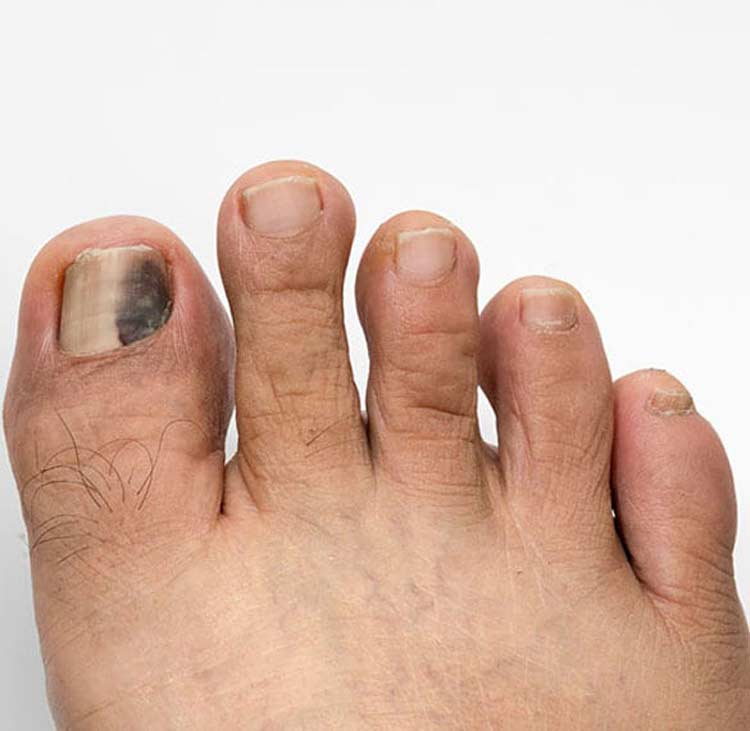
Discover how we can help you find relief from toenail problems.
Nearly everyone has experienced a nail problem at one time another. Nails on the toes, in particular, are susceptible to injury from things like accidental collisions with corners of doorways or damage from minor infections. Despite the pain that typically goes along with nail problems, most issues with toenails will respond well to treatment.
- Sometimes, all that’s needed is some over-the-counter or home remedies.
- Other times, common nail problems will require attention from a foot doctor.
Discoloration
Toenails sometimes become discolored due to some type of injury. If it’s a minor injury, little white marks called leukonychia may form. These usually go away within a few weeks. When a toenail turns black, it’s from an accumulation of blood due to an injury. If it’s severe, the toenail will fall off and a new one will form. Purple, brown, or black discoloration not related to an injury is a sign of foot melanoma, a type of skin cancer. It’s highly treatable when diagnosed in its early stages.
Changes In Shape and Texture
Toenails sometimes form rigid or show other signs of changing shape or texture. This is a common age-related change. It’s typically caused by poor circulation in the foot. When there are signs of circulation issues that may be contributing to changes in toenails, a podiatrist can determine if there are related issues with feet that can development from insufficient circulation that may require treatment.


Nail Bed Separation
If a toenail separates from the nail bed, it cannot be reattached. If it’s only partially separated, it’s best to see a foot doctor to determine if the rest of the nail needs to be removed. Self-removal of a partially detached toenail may result in an infection or produce an open sore. It usually takes about 18 months for a toenail to fully grow back.
Ingrown Toenails
Tight shoes, genetics, and improper trimming are some of the common reasons why ingrown toenails may develop. It’s a condition where the toenail grows in the adjacent skin. It can be painful, especially during normal foot movements or even when putting socks and shoes on. There may also be visible swelling around the affected toe.
If left untreated, ingrown toenails may become infected. While a rare occurrence, subungual abscesses sometimes form under the toenail. Soaking feet in a solution of Epsom’s salt can be effective if there’s no sign of an infection. For ingrown toenails that have resulted in an infection, a foot doctor may recommend partial or complete removal of the affected toenail.
Fungal Infections
Conditions such as athlete’s foot may contribute to a fungal infection that affects toenails. Infections of this nature are more likely to develop in warm and moist environments. Possible sources and contributing factors include wearing heavy socks that cause feet to sweat and walking barefoot on wet surfaces, especially surfaces where fungi may be present. Fungal infections affecting toenails may also occur in patients with:
- Underlying conditions that tend to affect feet such as diabetes
- A weakened immune system
- Toenail injuries that haven’t been treated
- Poor circulation in feet
Signs of a fungal nail infection may be as subtle as brittle or slightly discolored toenails. Toenail fungus (onychomycosis) is slow growing, which is why it’s important to self-check feet for signs of anything unusual. Serious infections may produce an odor or cause the toenail to separate from the nail bed. Treatment of fungal nail infections usually involves oral antifungal medications and topical ointments or creams.
Toenail Trauma
Toenails are susceptible to trauma that can be chronic or acute (sudden). An example of chronic trauma is when toenails become irritated from consistent rubbing or pressure from shoes that don’t fit properly. An acute injury is when a toe is stubbed or if a heavy object is dropped on a foot by the toenails. If the matrix, or center, of the toenail is affected by some type of trauma, the toenail may thicken or bruising may occur underneath the toenail. Trauma affected toenails sometimes contributes to the development of a bacterial, viral, or fungal infection. Treatment will depend on the extent of the trauma.
Toenails don’t grow as fast as fingernails. But they do still naturally repair themselves when there’s minor damage. This process may be affected by age-related changes or by diseases like diabetes that can affect circulation and blood flow in feet. If you have a nail problem that’s making you feel embarrassed or concerned, a podiatrist can perform a thorough examination to determine what’s going on and what course of action should be taken to resolve the issue.

